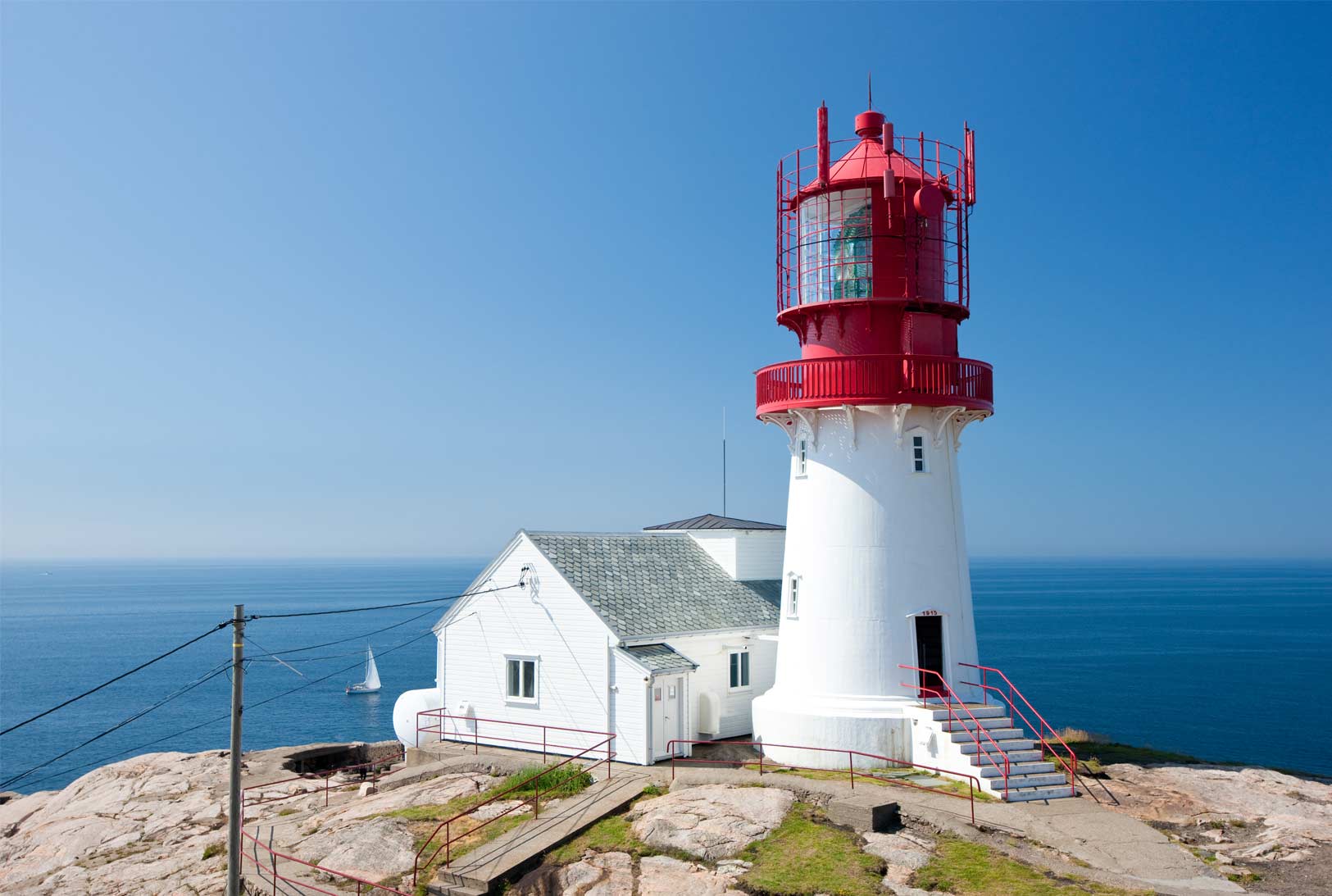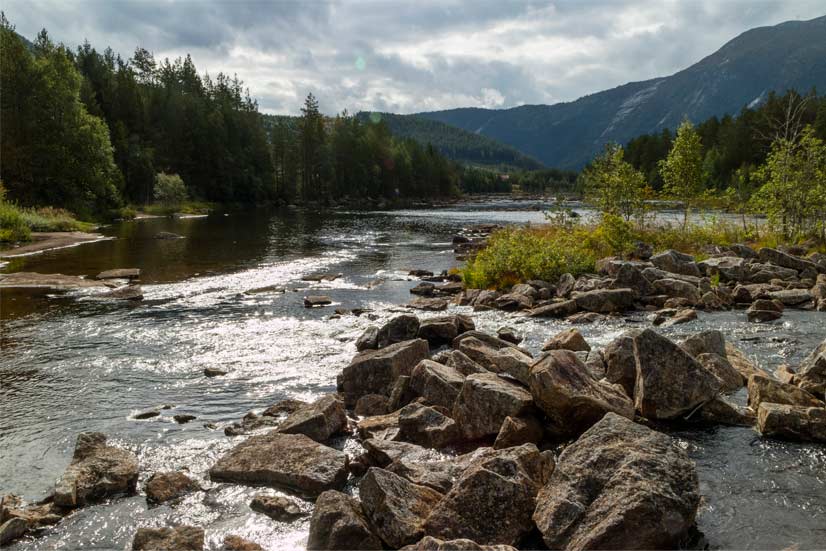Sometimes called “The Norwegian Riviera” for its temperate climate and abundance of “must experience” attractions, the county of Agder rests on the southernmost end of Norway. Idyllic, tree-dotted valleys are draped between rugged mountains and wooded heathland. They follow the rivers as they bend south through the hill country, emptying into the sea. The name Agder itself is mysterious. It predates the Norwegian language and is thought to be derived from Old Norse terms meaning either “the land that juts out to the sea” or “the land by the troubled sea.” Both would be appropriate.
 In western Agder, Lindesnes Lighthouse stands on the southernmost outcrop of the Norwegian mainland. The first fyr was erected here in 1656, to help guide ships on their way in and out of the Skagerrak Strait from the North Sea. Today’s white and red lighthouse was built in 1915, and is still guiding ships today, with two keepers onsite. It also serves as a living museum, offering tours of the tower and its grounds, a visitor center and a museum shop. While in Lindesnes, visitors can also reserve a serene perspective below the waves at Under, the world’s-largest underwater restaurant.
In western Agder, Lindesnes Lighthouse stands on the southernmost outcrop of the Norwegian mainland. The first fyr was erected here in 1656, to help guide ships on their way in and out of the Skagerrak Strait from the North Sea. Today’s white and red lighthouse was built in 1915, and is still guiding ships today, with two keepers onsite. It also serves as a living museum, offering tours of the tower and its grounds, a visitor center and a museum shop. While in Lindesnes, visitors can also reserve a serene perspective below the waves at Under, the world’s-largest underwater restaurant.
Twin lighthouses guard the town of Arendal. The seat of the County Governor (fylkesmann) of Agder and home to Sons of Norway lodge 8-015 Terje Vigen, this city inspired the mythical village which was home to Princesses Elsa and Anna in Disney’s “Frozen.”
In the shadow of another lighthouse, Henrik Ibsen started his career as an apothecary’s apprentice in the town of Grimstad, at the age of 15. Today, the pharmacy has been converted into a museum. Hosted by enthusiastic tour guides, guests can explore the rooms where Ibsen mixed chemicals, dreamt of literary success, and wrote his first play, “Catilina.”
Featuring long white beaches studded with waving palm trees, Kristiansand is Agder’s largest city. It was founded as a strategic stronghold in 1641 by Danish King Christian IV. Today, it is a haven for holiday seekers. The city teems with museums, amusement parks and historic sites. Visitors can stroll around Posebyen, a neighborhood crowded with old-fashioned whitewashed wooden houses. Families will enjoy an adventure at Dyreparken, the largest zoo in Norway, ruled by a notorious pirate, Captain Sabeltann (Sabertooth). Kristiansand is also the birthplace of Crown Princess Mette-Marit.
 Agder’s longest river, the Otra, empties into the sea at Kristiansand. Heading upstream, you will find yourself in Setesdal, a valley overflowing with culture and heritage. Here you will be assailed by Hardanger fiddles and munnharper (jaw harps), accompanied by walloping patterns of foot stomping as dancers rollick to tunes called rammeslåtter, “powerful songs.” The intense, visceral tunes are rumored to cast a trance on players and dancers alike. One saga records that the only way to stop the frenzy was to cut the fiddler’s strings!
Agder’s longest river, the Otra, empties into the sea at Kristiansand. Heading upstream, you will find yourself in Setesdal, a valley overflowing with culture and heritage. Here you will be assailed by Hardanger fiddles and munnharper (jaw harps), accompanied by walloping patterns of foot stomping as dancers rollick to tunes called rammeslåtter, “powerful songs.” The intense, visceral tunes are rumored to cast a trance on players and dancers alike. One saga records that the only way to stop the frenzy was to cut the fiddler’s strings!
The Setesdal bunad is unique among folk costumes in that it has a much shorter hemline closer to the knee and an ample, belted waist. Another sartorial tradition is the lusekofte sweater pattern, translating as “lice jacket.” The “lice” refers to the stiches of white dots marching over a typically black background.
United on January 1, 2020, Vest-Agder and Aust-Agder combined, creating a diverse playground for Norwegians and international tourists alike. Agder has everything from downhill skiing to surfing, from hardcore traditional dancing and music, to Palmesus, Scandinavia’s biggest beach party. Whether you are a pirate, a poet or a princess, Agder has something in store for you.
